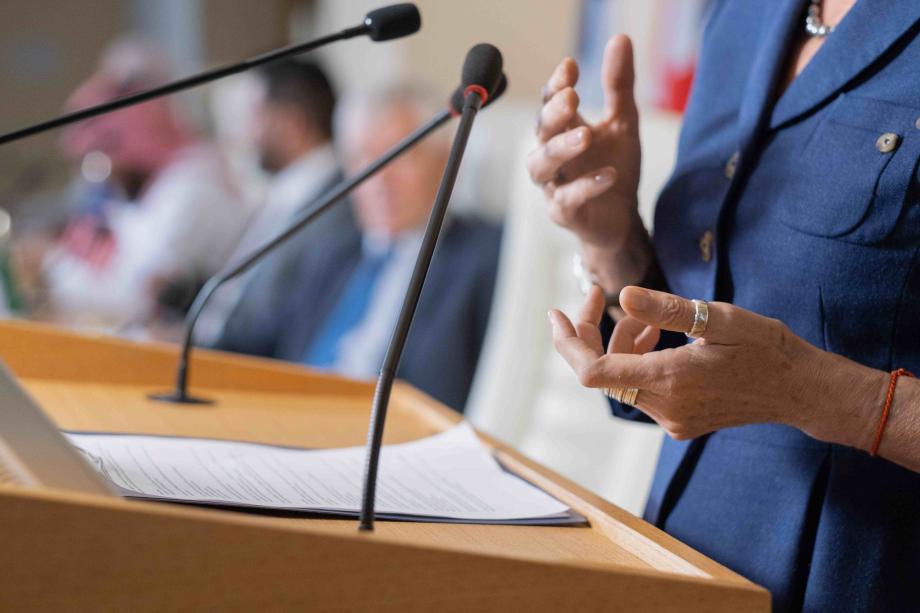How unequal access to funds hinders women's participation in politics

The data is daunting: only 30 women in the world serve as Head of State or Government. Women hold only 21% of the ministerial positions, and of all national parliamentarians, only 26% are women. According to UN Women, at the current rate, gender parity in national legislative bodies will not be achieved before 2063[1]. While women make up half the world's population, they are still not represented at the highest levels.
Many systemic barriers hinder women's participation in politics. It is, after all, a largely male-dominated field that has traditionally excluded women from participating. While the patriarchal culture or the lack of support from political parties might partially explain this unequal gender representation, there is one often overlooked obstacle that women have to overcome to access the high spheres of political representation: access to funds.
Gendered challenges
Electoral campaigns are extremely costly and time-consuming, and those that manage to secure more funds to run their campaigns have better chances of succeeding. Studies[2] show that female candidates have more difficulty securing funds for their campaigns. They generally have to rely on many sources of income, which requires spending much more time and effort on their fundraising efforts, while their male counterparts can focus on other aspects of their campaigns.
One of the most relevant factors regarding the impediments women face in accessing funds is incumbency[3]. Because most women are newcomers to politics, they must first establish themselves in the political arena, which puts them at a disadvantage against male politicians who are already well-known. Women still have to fight the stereotype that they are less capable of certain roles. Even when they get a position of political power, they are usually put in charge of topics like gender and children policies, healthcare, education, or migration. Their disadvantage is even more prominent when placed against a person that has already held a position in office and does not need to fight for recognition. There are always exceptions - Marine Le Pen, former leader of the French National Rally, comes from a family of famous politicians. Her surname alone is enough to get her access to big donors. But for others, donors remain a difficult-to-approach elite. In addition, men are more likely to fund other men's campaigns, while women are more likely to donate to other women[4]. Yet since the corporate elite is also male-dominated, the political gender gap continues to grow.
Political affiliation also plays a role, and Le Pen is the perfect example of it. Centre-right and right-wing parties are more likely to attract donations, especially from large corporations, while left-wing and centre-left candidates must rely more on their political party for support[5]. The political gender gap is thus also affected by party affiliation, with candidates from the left or centre-left parties facing a disadvantage. The role that political financing plays in the underrepresentation of women or minorities cannot be underscored. Some countries are already taking measures to reduce this gap and ensure that political campaigns are fairer.
Ways forward
One effective solution to level the playing field for all candidates and reduce the reliance on private funding for political campaigns is to impose strict spending limits for electoral campaigns. This measure has been successfully implemented in countries such as Israel, where political parties rely almost entirely on state financing, and limits exist on contributions from individuals and corporations. By increasing state funding for political campaigns, candidates can focus on their message and platform rather than fundraising efforts. Furthermore, this measure also increases transparency and accountability in the political process.
However, it is essential to note that while spending limits are an important step, they are not a panacea. A comprehensive and holistic approach must be taken to achieve greater representation of women in politics. This includes implementing gender quotas for political parties, increasing mentorship and training opportunities for female candidates, providing direct financial support, and making the disbursement of public funding conditional on parties' commitment to equality. Additionally, this approach must consider all forms of discrimination, including intersectional barriers that women face. By addressing these issues in a comprehensive and targeted manner, we can work toward a more representative and inclusive political system.
[1] UN Women (2022) Women’s leadership and political participation. Available at: https://www.unwomen.org/en/what-we-do/leadership-and-political-participation/facts-and-figures#_edn1
[2] Shannon Jenkins, “A Woman’s Work Is Never Done? Fund-Raising Perception and Effort among Female State Legislative Candidates”, Political Research Quarterly (June 2007, 60-2).
[3] Global 50/50 Campaign - Get the Balance Right, Women Candidates and Campaign Finance (2007). Women’s Environment and Development Organization.
[4] Global 50/50 Campaign - Get the Balance Right, Women Candidates and Campaign Finance (2007). Women’s Environment and Development Organization.
[5] Francesca Feo, Chiara Fiorelly and Daniela Piccio, “Gendered patterns in candidates’ campaign fundraising: the case of Italy”, International Political Science Review (2021, 1-16).
* Funded by the European Union. Views and opinions expressed are however those of the author(s) only and do not necessarily reflect those of the European Union or EACEA. Neither the European Union nor the granting authority can be held responsible for them.



Project Specialist for Defence and Security
Co-president of Volt Europa